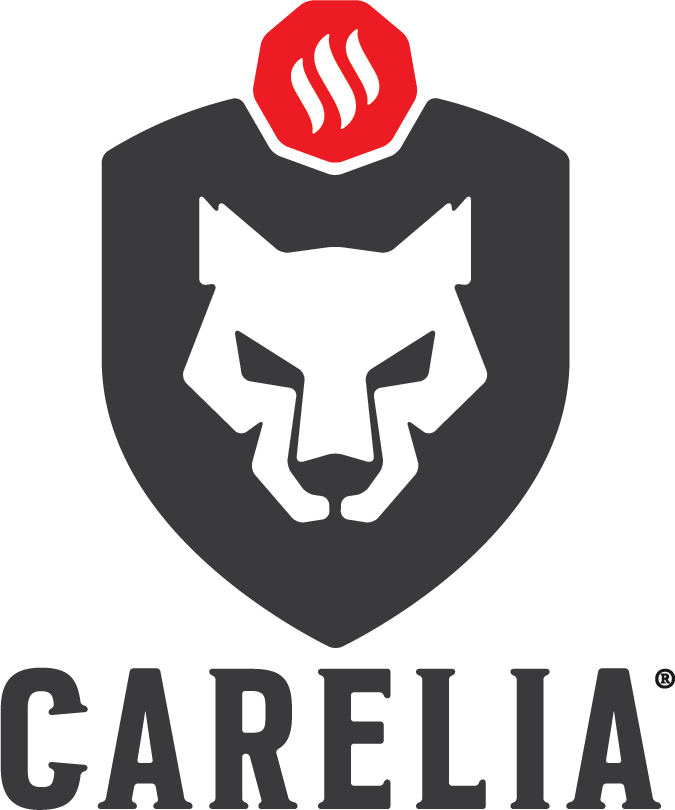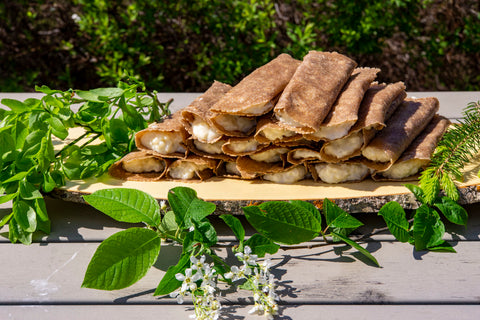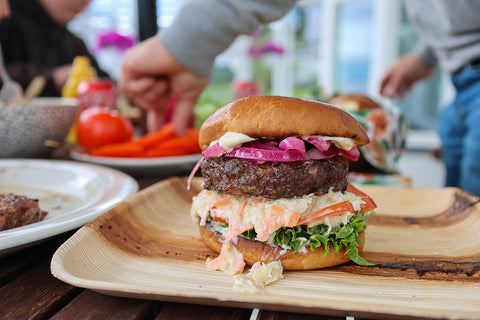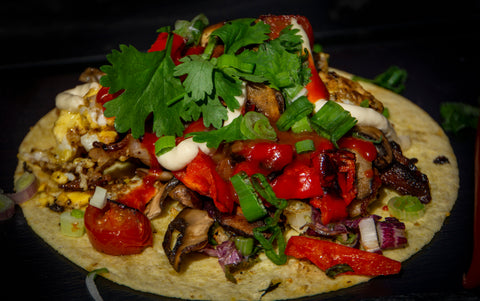This time, we would like to introduce you to something completely different: a genuine, traditional Karelian delicacy called sultsinat. You may already have heard of Karelian pies, which are undoubtedly one of the best traditional Finnish dishes. But did you know that both Karelian pies and sultsinat are almost the same? In fact, there is no difference between them other than their appearance. A crust of unleavened rye dough and rice porridge filling are “the spirit and essence” of both dishes.
Because we love traditional Karelian food, we tried to make sultsinat with real fire. And guess what? The result exceeded our expectations – both the flavor and appearance were just smashing! Moreover, the cooking process was overall more effortless compared to Karelian pies, which often require precise finger dexterity and a higher baking temperature.
Now, by sharing the following recipe for sultsinat cooked on fire, we would like to encourage you to try making these traditional Finnish pastries yourself. The recipe is specially designed for all of you, who want to try sultsinat for the very first time. With that being said: have fun and enjoy the taste of the authentic Karelian flavor!
With this recipe you will make 25-30 pieces of sultsinat.
Dough:
2 dl cold water
1 tsp fine salt
4–4,5 dl fine rye flour (if you’re in Finland or have a chance to use Finnish groceries, use Myllyn Paras ruisjauhoa or Sunnuntai hieno täysjyväruisjauhoa, because they are the best for this purpose!)
Filling:
2 dl porridge rice / pudding rice
4 dl cold water
1 l whole milk
1 tsp fine salt
For greasing the crust:
100 g salted butter
2 tbsp cooking oil
Here’s how you make them:
- The night before baking, measure out the porridge rice and cold water into a large pot or saucepan. Leave the rice to swell overnight. Doing so will reduce the cooking time of the porridge and speed up the whole cooking process. However, if you want to save even more time on the actual baking day, you can cook the porridge in advance the day before. Just follow the instructions in steps 2-3 and on the baking day you can continue from step 4.
- On the baking day, prepare the rice porridge first. Before that, light the fire on the Carelia Grill. When the heat is right, move the rice porridge pot to the grilling level or (Plancha) griddle. Gradually add the whole milk to the rice, as it absorbs into the rice. If you have soaked the rice overnight, the porridge will need to cook for about 40 minutes. Otherwise, the porridge will take about 1 hour to cook. Make sure the porridge doesn't burn on the bottom - stir it frequently with a wooden spatula!
- When the porridge is ready, add the salt. Put a lid on the porridge pot and set it aside to cool.
- While the porridge cools, prepare the dough for the crusts: measure cold water, salt and rye flour into a bowl. Mix the ingredients, preferably by hand, and make a good dough. A good dough is one that is easy to work with (not rock-hard) and comes away well from the sides of the bowl. If the dough feels too hard, soften it by adding a little water. On a (rye) floured table, form the dough into a round bar, and place it in a plastic bag to prevent it from drying out.
- Traditionally, the crust of Karelian pies and sultsinas is prepared by rolling out the dough using a rolling pin (or pualikka in Karelian). However, we recommend using a pasta maker - this makes it easy to get even, uniform crusts. There are differences between the makers but adjust your maker to the position where the rollers are as far apart as possible.
- Cut about a third of the bar and flatten it by hand to make it as easy as possible to feed into the pasta maker. Flour the dough with some rye flour (otherwise the dough will stick to the pasta maker) and feed it into the maker while turning the crank. This will give you a smooth dough about 1 cm thick. Use a glass (about 6 cm in diameter) and press with it the dough into small discs (or kakkarat as we call them in North Karelia 😉) and flour them well.
- Turn the pasta maker twice to a lower/higher setting (depending on your maker) so that the rollers are closer together now. Feed the kakkarat one by one through the maker. As you can see, they now have a more oval shape.
- Turn the maker again twice to a lower/higher setting (rollers closer together) and feed the kakkarat diagonally through the maker. At this point, flour them if necessary.
- One more time, turn the pasta maker twice to a lower/higher setting (rollers even closer together), and feed the kakkarat through the machine one last time. Now you have the first crusts ready to be cooked on fire. But before that, take a large plate, and place the crusts, well-floured, somewhat on top of each other – not directly on top of each other, because otherwise it will be difficult to separate them. Cover the plate with a plastic bag, for example, to prevent the crusts from drying out.
- Repeat steps 6-9 until you have used all the dough and made it into crusts. In practice, you should make each batch (three of them altogether) one by one, with a third of the dough on the second setting (see step 7), then on the third setting (step 8), and finally on the fourth setting (step 9).
- If you have prepared the porridge filling the day before, you will need to soften it a little before filling the crusts. To do this, you will need 1 egg and 1 dl of cooking cream; add the cooking cream and the egg to the porridge, stir until smooth and place on the grilling level/griddle. Let the porridge warm up while stirring carefully from the bottom, but do not let it boil. When the porridge is sufficiently warm (but not too hot), transfer it to a side table to wait.
- Next, melt the butter in a small saucepan on the grilling level/griddle. When the butter has melted, take the pan aside and add cooking oil to soften the consistency.
- When the porridge has cooled down enough to be no longer hot, start dry frying (yes, DRY frying) the crusts. If possible, ask a friend to take on either dry frying the crusts or greasing and filling them - and you'll do the other. This not only makes the cooking more fun, but also makes it speedier and prevents the crusts from drying out.
- Place two large plates as well as the porridge and butter pans/pots on the side table. Put one or two crusts on a hot and dry griddle/cast iron pan. To prevent the crusts from burning, turn them frequently for about a minute. Be watchful - the crusts may brown a little, but they shouldn't dry out too much.
- Transfer the fried crusts to a plate and immediately grease only one side. Spread about two tablespoons of rice porridge on the ungreased side. Spread the porridge evenly around the edges. Turn the sides on each side facing each other so that the edges of the crust almost touch each other. Fold the crust in half to make a pretty sultsina. Then, transfer the finished sultsina to another plate. Continue frying and filling this way until all the crusts and porridge have been used up. And now, you have some delicious, traditional Karelian delicacies made with real fire, ready to be served and enjoyed.
HYVÄÄ RUOKAHALUA - ENJOY
For this recipe, we used Carelia Grill® Rondo, but alternatively you can use any other grill of Carelia Grill with a grilling level or griddle.






